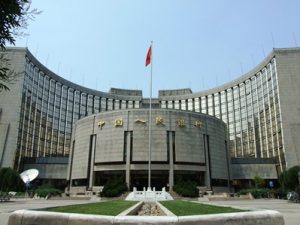China’s peer-to-peer lenders are in the grips of a tumultuous period of elevated defaults, platform collapses and regulatory uncertainty, but there are signs of smoother sailing ahead, at least for those that survive the shakeout.
The value of outstanding P2P loans at the end of October has shrunk to around $122bn, from $177bn at the end of last year, following the recent wave of defaults, according to figures from wdzj.com, a website that tracks the industry. But the sector’s immediate priority is meeting a so-called “filing” requirement — essentially an approval process — that all P2P platforms must complete or else cease operations.
 Regulators have repeatedly pushed back the deadline to complete the filing process, and no platform has successfully completed one so far, but industry observers expect that process will eventually shrink the field from more than 1,500 players to as few as 50.
Regulators have repeatedly pushed back the deadline to complete the filing process, and no platform has successfully completed one so far, but industry observers expect that process will eventually shrink the field from more than 1,500 players to as few as 50.
Though this winnowing process will be painful, the industry’s stalwarts have some long-term advantages compared to peers in other parts of China’s financial system.
A regulatory campaign to limit financial risk from shadow banking has led to a sharp decline in most forms of non-bank lending.
But regulators are not lumping P2P lenders in with non-bank lenders such as trusts, insurers and fund management companies that are the main targets of the shadow banking crackdown.
New asset management rules limit shadow banks’ ability to sell non-securitised credit assets to retail investors, but P2P groups were exempted from that restriction, reflecting regulators’ determination that P2P lending was closer to capital markets activity than to shadow banking.
The tendency of China’s P2P industry to attract funding from retail investors is also the most important difference between China and developed markets, where institutional money is now the main source of funding for P2P loans.
“After some internal debate, regulators decided that (firms in) the peer-to-peer industry should be regulated as (a) capital markets institution rather than on a banking model that would have focused on capital requirements,” said Cliff Sheng, partner at consultancy Oliver Wyman in Shanghai, who advised China’s banking regulator and counts several P2P platforms as clients.
This determination will be advantageous to the industry given the broader crackdown on shadow banking. Unsecuritised loans were the main source of high yields available on wealth management products that Chinese non-bank lenders sold to retail investors over the past decade.
Under the new asset management regime, investors determined to seek out high yield will have far fewer options and are likely to turn their focus to P2P.
But permission to sell to retail investors comes with strings attached. Regulators want P2P platforms to increase the liquidity of the loans they facilitate — effectively transforming them into securities or something similar — so that an active secondary market can develop in order to prevent investors from being forced to hold loans to maturity.
They also want to make sure that P2P platforms focus lending on consumers and small businesses, while forbidding loans above Rmb5m to single corporate borrowers.
A focus on small, underserved borrowers will provide additional political cover for the industry against the backdrop of broader efforts by the banking regulator and central bank in recent weeks to channel more financing to private businesses.
The cliché about Chinese using the same work for crisis and opportunity is only half true — the two words share one character in common — but in the case of P2P, the old adage seems to apply.
By Gabriel Wildau, Financial Times


























